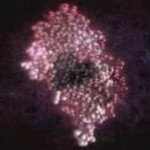Mixed-up Nomenclature?
 An article in the December 24, 2009 issue of Molecular Cell, “A Reconfigured Pattern of MLL Occupancy within Mitotic Chromatin Promotes Rapid Transcriptional Reactivation Following Mitotic Exit,” had me thinking how misleading genes and proteins are often named. The publication details the function of a protein, Mixed Leukemia Lineage (MLL), which attaches to DNA prior to cell division. MLL “bookmarks” genes that need to be expressed immediately after the cell divides. The protein’s function is not, however, to cause leukemia. Its name – Mixed Lineage Leukemia – rather reflects the story of its discovery as it was found during research into the causes of leukemia.
An article in the December 24, 2009 issue of Molecular Cell, “A Reconfigured Pattern of MLL Occupancy within Mitotic Chromatin Promotes Rapid Transcriptional Reactivation Following Mitotic Exit,” had me thinking how misleading genes and proteins are often named. The publication details the function of a protein, Mixed Leukemia Lineage (MLL), which attaches to DNA prior to cell division. MLL “bookmarks” genes that need to be expressed immediately after the cell divides. The protein’s function is not, however, to cause leukemia. Its name – Mixed Lineage Leukemia – rather reflects the story of its discovery as it was found during research into the causes of leukemia.
MLL is not a nasty leukemia-causing protein. In fact, it is just the opposite. Cell division is somewhat like moving into a new apartment – all the DNA is still neatly packaged into moving boxes. By labeling genes immediately after division, MLL helps avoid potential errors in the operation of new cell. Comparing cell division to Moving Day – all the DNA is still neatly packaged into moving boxes – it may become clear that labeling genes that are needed immediately may be a helpful trait to avoid hick-ups in a new cell’s operation. Just like labeling the moving box with the shampoo and the slippers might allow us to function efficiently at the evening of Moving Day. Just saying…
Elucidating MLL’s function adds to our knowledge about how information is being passed from one generation to the next. Mechanisms such as this operate on top of the genetic code and belong to a cell’s arsenal of epigenetics tricks. MLL confers information by sitting on genes that need to be activated, making sure the cell finds them quickly.
Mutated forms of MLL, however, can cause leukemia (among a slew of other troubles). Check out the story about another gene involved in chronic myeloid leukemia in Genes and Medicine at http://www.dnai.org/d/index.html.
| Print article | This entry was posted by Uwe Hilgert on January 20, 2010 at 10:59 am, and is filed under Your Genes, Your Health. Follow any responses to this post through RSS 2.0. You can skip to the end and leave a response. Pinging is currently not allowed. |

